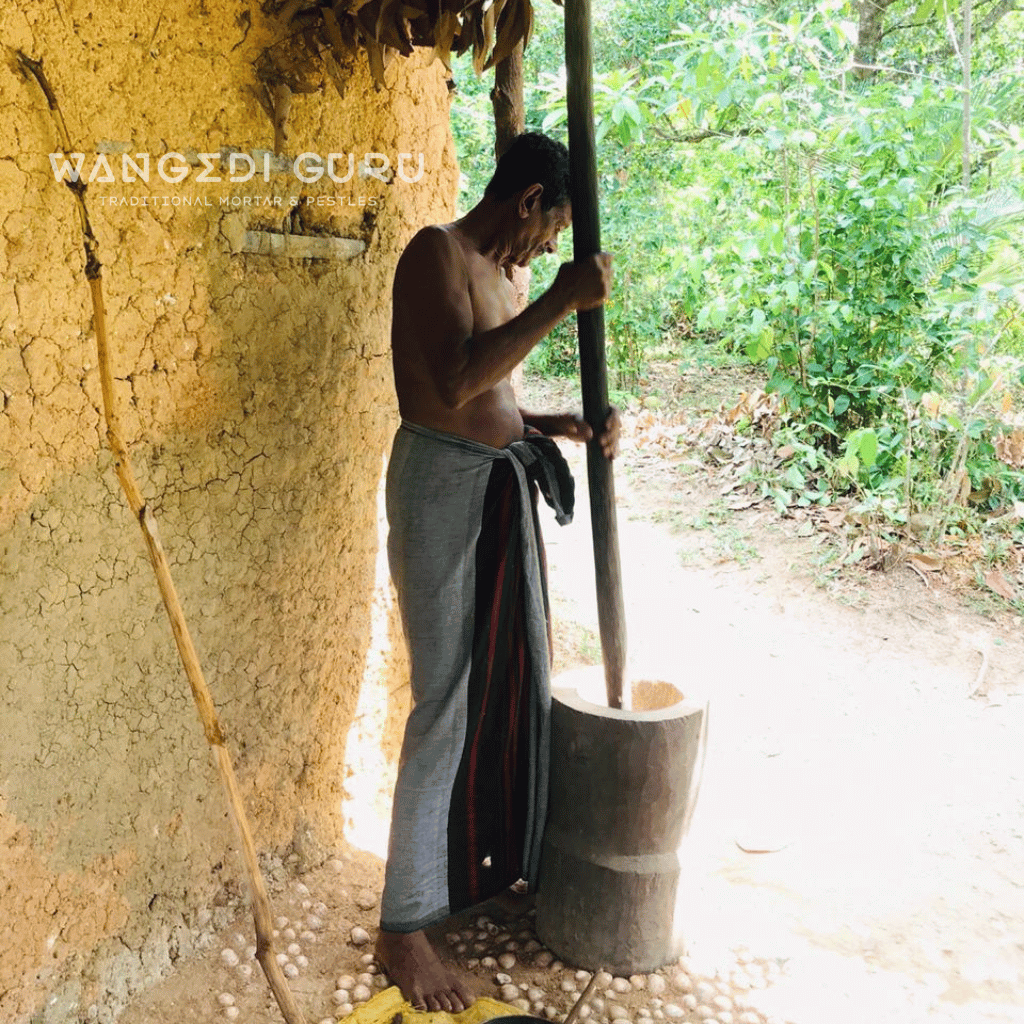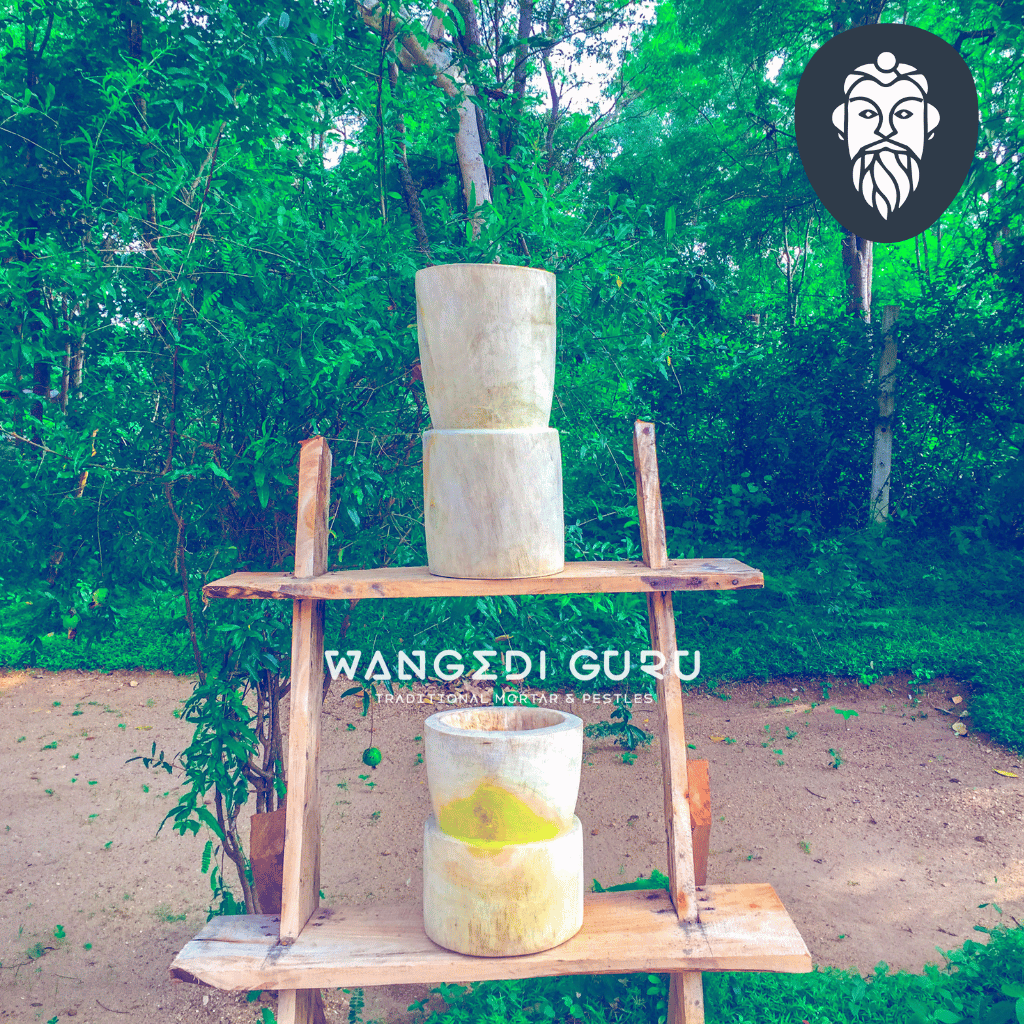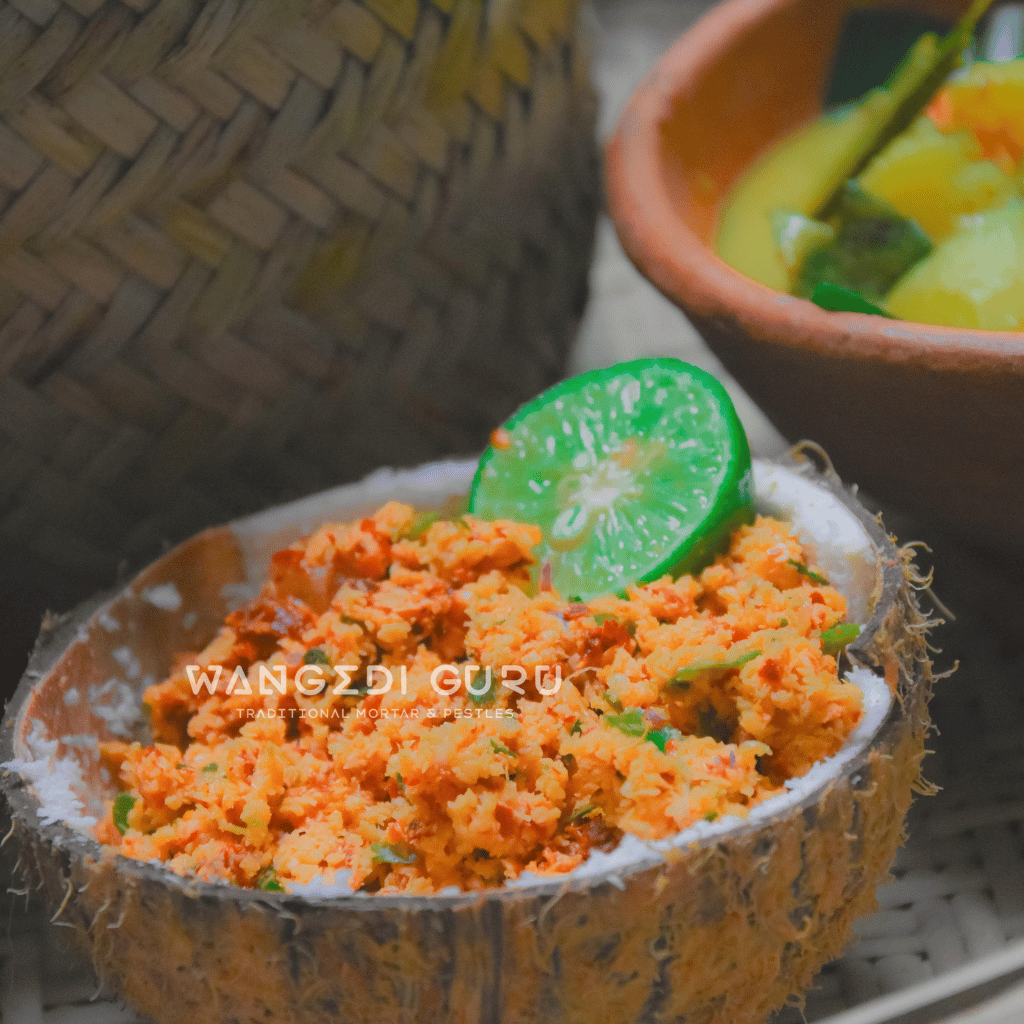Wangediya Saha Molgaha
Mortar & Pestle //The wangediya, a traditional Sri Lankan wooden mortar and pestle, holds a significant role in Sri Lanka’s culinary and medicinal heritage. Crafted from sturdy hardwoods like Burutha, jackfruit, ebony, Milla, and kithul palm, the wangediya features a cylindrical pestle and a bowl-shaped mortar with a flat bottom. Its purpose spans grinding spices, herbs, and various cooking ingredients, as well as crafting betel leaves, cherished for their stimulating properties.

Having stood the test of time, wangediya has been an integral part of Sri Lankan traditions for centuries. Skilled artisans meticulously carve intricate designs on these valuable tools, further enhancing their cultural significance and artistic appeal.
However, the concept of mortar and pestle extends beyond Sri Lanka. Dating back thousands of years in world history, evidence of their use can be traced as far back as 35,000 BC. The Egyptian medical document known as the Papyrus Ebers, dating back to 1550 BC, provides the earliest documented evidence of their existence, highlighting their utility in both medical and culinary practices.
The Greeks also embraced the concept of mortar and pestle, albeit with a stone variation characterized by a more bowl-shaped design. This particular shape remains the most common form of the modern mortar.
In Sri Lanka, excavations have unearthed evidence of wangediya and molgaha (mortar and pestle) usage, indicating their presence in prehistoric times. This is further supported by the historical significance of the Anuradhapura Kingdom, dating back to the 6th century BC.
Today, mortar and pestles continue to be utilized across various regions worldwide. These versatile tools serve numerous purposes, including grinding spices, herbs, and nuts, crafting medicinal concoctions, mixing costumes and facilitating food preparation.
and Tradtions of Wangediya
Wangediya saha Molgaha ( mortar and Pestle) played significant roles in various rituals and practices in Sri Lanka. The mortar and pestle held a special place of reverence among ancestors, who considered them sacred objects. They strictly adhered to certain prohibitions, such as refraining from jumping over the Wangediya saha Molgaha, sitting on the mortar, or pushing it with their feet.
For example, during auspicious times for the rituals, Sri Lankan ancestors would drape a piece of white sacred cloth around the mortar (Sudu Piruwata Andaweema). They would then use the mortar and pestle to pound and prepare the necessary flour from grains. This careful and ceremonial preparation of sweets using wangediya saha molgaha was an integral part of Sri Lankan Cultural practices.

✽ Paahina Wangediya (Main Mortar)
Pahina Wangediya, Big Mortar, or Ela Mortar, holds the distinction of being the largest among mortars. Its design prioritizes durability, thickness, and strength. Compared to other mortars, this particular one is notably heavier.
Originally, the main purpose of this mortar was to separate the husks from grains and subsequently grind them. This functionality led to its alternative name, “Pahina Wangediya.” It played a crucial role in processing various grains such as paddy, kurakkan, undu, and mung by peeling and whitening them.
The mouth of this mortar possesses a considerable depth, approximately equivalent to the size of a wrist, while the bottom is slightly smaller. Typically, this mortar is crafted using robust wood. The choice of wood was deliberate, as using stones for its construction could potentially damage the grains by breaking or turning them into flour.
The design of the Prime Mortar focuses on efficiently removing the outer skin or cover of the grains, ensuring optimal grain processing..
✽ Wala Wangedia (Piti Kotana Wangediya)

The pit mortar, also known as the flouring mortar, is slightly smaller in size compared to the ground mortar. Its external appearance showcases a slender and tall structure. This type of mortar is constructed with gaura wood. Notably, the mouth of the mortar is wide, while the bottom circle is relatively small, usually up to the size of a palm.
Strong woods are commonly used in the construction of these mortars. They were primarily utilized to finely grind rice, grains, or other materials. However, it was less common to add leaves and chillies to this particular mortar. It served as a tool for preparing flours used in New Year rituals and homemade sweets. Additionally, the pit mortar was also employed in grinding rice and green beans.

About The Author
Nimnaka
Nim is a licensed Gourmet excursion guide, Flavor connoisseur, and countrywide tour guide. With a collective experience of 13 years, Nim is a graduate and field researcher deeply passionate about food and culture. Before becoming a Rustic Flavor connoisseur, Nim worked for prominent travel companies for 10 years, organizing tours across the country and abroad.